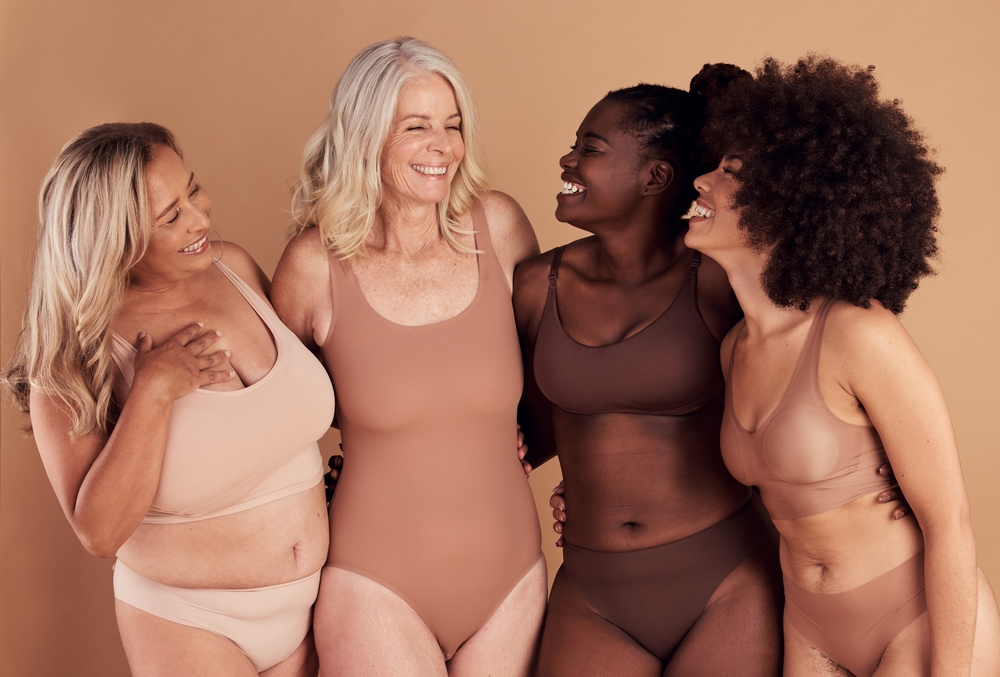Female Leadership and Digital Strategy in Sustainable Luxury Intimate Fashion in Canada in 2025
Women’s leadership is playing a significant role in shaping the sustainable luxury intimate fashion sector in Canada by integrating innovative digital strategies with eco-responsible, ethical, and inclusive business models that promote diversity and environmental consciousness.

Female Leadership Driving Sustainable Luxury Intimate Fashion
Women entrepreneurs and executives are redefining intimate fashion in Canada by emphasizing sustainability and inclusivity. A notable example is Haami, launched in 2022 by female founders who design bras tailored for plus-size bodies, gender-diverse individuals, and differently-abled communities. Haami uses sustainable and recycled materials aligned with circular economy principles, aiming to produce high-quality, environmentally conscious products. Their patent-pending adjustable bra design reflects innovation with a purpose under female leadership.
Other female-led brands such as Love & Nudes focus on social sustainability by offering diverse skin tone underwear and breast cancer screening bras tailored to Black, Indigenous, and People of Colour (BIPOC) communities. This inclusive approach shows how female leaders integrate social equity as a core element of luxury sustainable fashion.
Many female designers and founders incorporate social missions within their business models, with some dedicating portions of profits to address systemic issues like homelessness. This expands responsibility from product sustainability to broader societal impact, a trend gaining traction in Canada in 2025.
Digital Strategies Enhancing Sustainability and Consumer Engagement
Digital technology is central to the sustainable luxury intimate fashion market and is extensively employed by women leaders to promote customization, reduce waste, and empower consumers.
- 3D Virtual Try-Ons and Custom Fit Technologies: Platforms like The Fitting Room and Authentique offer smartphone-based 3D avatar generation and virtual fitting rooms. These technologies allow customers to virtually try on custom garments, which can help reduce overproduction and returns. They also lower costs and support a made-to-order sustainable supply chain.
- AI-Driven Consumer Tools: Brands utilize AI to improve personalization and facilitate sustainable consumer choices. For example, Flashee provides AI fashion assistants that match customers with sustainable brands, potentially increasing shopping satisfaction and decreasing waste from ill-fitting purchases. Similarly, Passen uses AI to recommend sizes accurately, helping reduce online returns.
- Virtual Selling and Clienteling: Tools such as Salesfloor enable store associates to engage with customers through mobile devices via video calls, live chats, and personalized appointments. This blend of human interaction with digital convenience can enhance engagement and support sustainability by encouraging considered purchases.
- Augmented Reality (AR) Experiences: AR applications like TryOn360 facilitate virtual accessory try-ons, which can decrease the need for physical samples and returns. Female innovators are leading efforts to combine immersive consumer experiences with sustainability objectives through such technologies.
Practicing Circular Economy and Eco-Responsible Production
Sustainability extends beyond materials and includes the entire product lifecycle via circular economy practices. Female-led companies like 7 Leagues Leather innovate by upcycling materials such as fish skins, emphasizing resource efficiency and material durability. The incorporation of upcycled elements results in luxury intimate products designed to have a reduced environmental footprint.
Platforms such as Samara & Co bring together eco-conscious Canadian brands and offer eco-friendly packaging solutions. This collaboration supports small and medium female-led brands in amplifying their environmental commitments and marketing efforts. Sustainable packaging is increasingly recognized as an important component of luxury branding in 2025.
The emphasis on recycled fabrics, biodegradable materials, and local production with fair labor standards reflects a comprehensive approach to sustainability shaping Canadian intimate luxury fashion.
Inclusivity and Social Responsibility in Brand Strategy
Female leaders prioritize inclusivity and representation as essential ethical and market considerations.
- Product ranges expanding to accommodate diverse body types, gender identities, and cultural needs are becoming more mainstream. Brands like Haami and Love & Nudes are developing products for underrepresented groups, illustrating the connection between social and environmental sustainability.
- Social impact initiatives, such as collaborations for breast cancer awareness and community reinvestment projects, align brand values with the expectations of consumers, especially younger demographics who seek authentic brand purposes.
- Marketplaces like Poh Lin support female designers from diverse backgrounds by connecting them directly to global consumers, promoting a variety of design perspectives and encouraging sustainable practices.
The Future Outlook: Integrated Leadership, Technology, and Sustainability
Looking forward, female leadership in Canada’s sustainable luxury intimate fashion sector embraces strategies that combine technological innovation, inclusivity, and environmental care.
Notable trends shaping this outlook include:
- Increasing adoption of AI and augmented reality to personalize shopping experiences and reduce fashion waste.
- Growing circular economy practices aimed at minimizing textile waste and encouraging upcycling.
- Expanding digital platforms to support emerging female designers in accessing wider markets.
- Embedding social responsibility within brand values to address community needs and promote equity.
- Using data analytics and consumer insights to offer tailored experiences enhancing engagement and sustainability.
These elements contribute to evolving industry standards for mindful production and consumption within Canada’s sustainable luxury intimate fashion landscape in 2025.
Summary
Female leadership in Canada’s sustainable luxury intimate fashion industry in 2025 highlights commitments to innovation, inclusivity, and digital integration. Women-led companies are advancing virtual fitting technologies, AI-personalization, and circular economy methods that help reduce waste and empower consumers. Socially responsible initiatives further ensure diversity and equity remain key brand components, driving stronger consumer connections. Collectively, these developments illustrate a sector where luxury, sustainability, technology, and inclusivity intersect to shape a purposeful marketplace.
Sources
- F6S — Canadian Fashion Companies Snapshot August 2025
- Smart Meetings — 2025 Smart Women in Meetings: Industry Leader
- Inspiring Canadians — 20 Inspiring Canadian Brands 2025
Disclaimer: All content, including text, graphics, images and information, contained on or available through this web site is for general information purposes only. The information and materials contained in these pages and the terms, conditions and descriptions that appear, are subject to change without notice.




